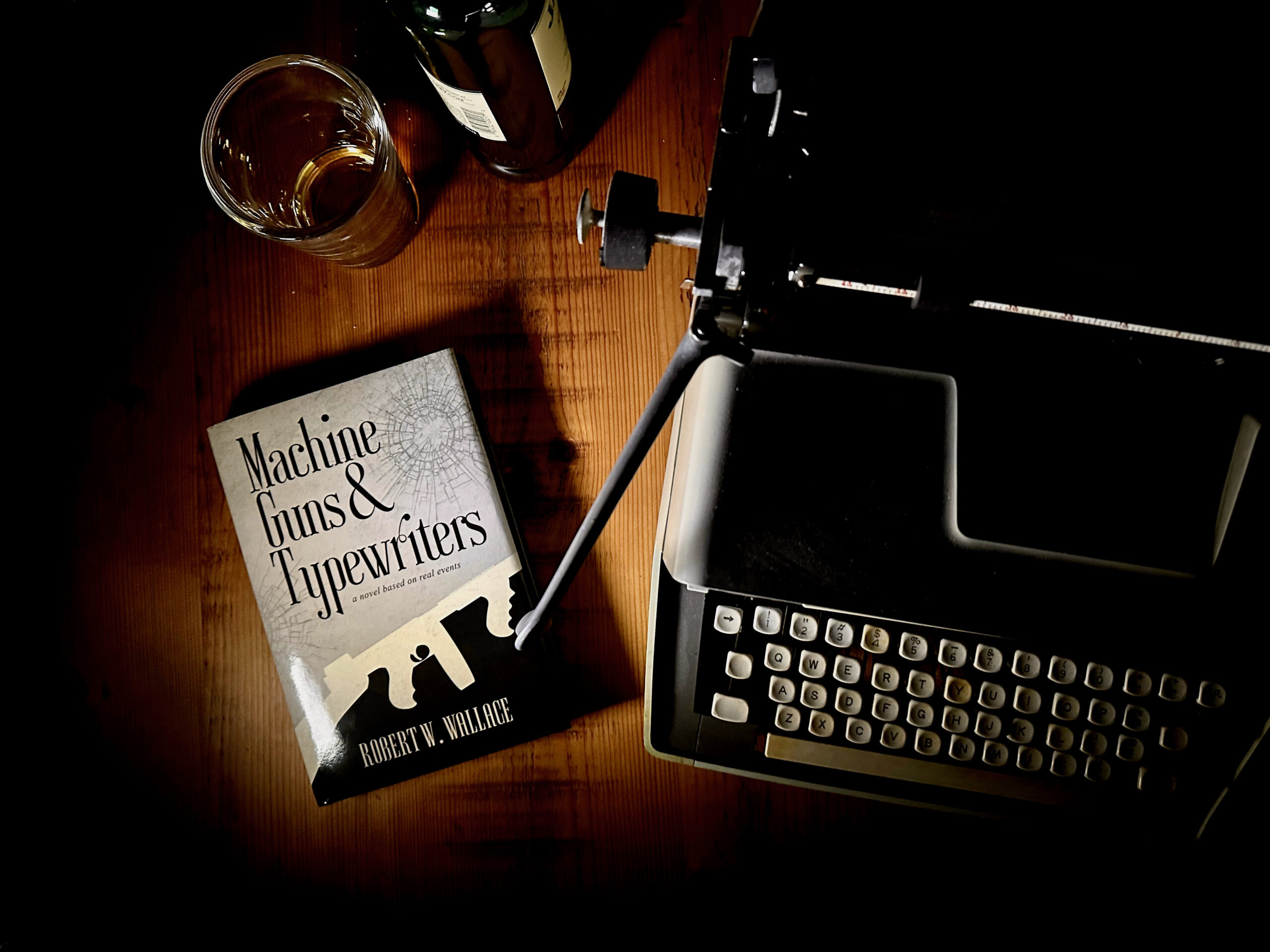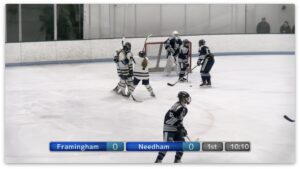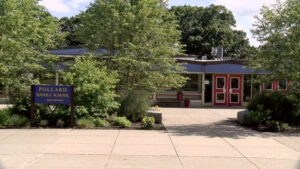
Local Author Pens Novel on Infamous Needham Bank Robbery
February 6, 2024
When Robert W. Wallace drives down Great Plain Avenue, past a 90-year-old crime scene, the hairs on the back of his neck stand up. It’s “as if the souls that were impacted most still circle,” he said.
Growing up, Wallace knew the story well: a group known as the Millen-Faber Gang stole about $14,000 from the Needham Trust Company on Feb. 2, 1934, killing two police officers with a machine gun in the process. It was the first time the weapon was used in a murder in the state.
The criminals got away, and the incident captured the region while simultaneously transforming Needham, which Wallace describes as a “sleepy suburb town.” As law enforcement urgently searched for answers, crime reporters found themselves mixed in the action as they too became crime solvers.

“Machine Guns & Typewriters,” Wallace’s debut historical fiction novel, recounts the “real terror that gripped Massachusetts” while integrating his own dialogue and emotion based on the gang’s actions.
At the heart of the story is how a small town “lost its innocence that day in the first burst of machine gun fire,” he said.
“The Millen-Faber gang, they left behind a bloody score of brazen murder and sensational robbery across not just Needham, but Fitchburg and Lynn as well,” Wallace said. “These were sinister men that were unknown to police, and that made the story and the case complicated.”
As the train traveled through Needham that Friday morning, traffic came to a halt, which allowed the robbers to construct their plan, Wallace said. They were eventually brought to justice and sentenced to death.
The gang consisted of Murton Millen — described as a smart but arrogant man — his loyal brother Irvine and Murt’s high school friend Abraham Faber, who studied aerodynamics at the Massachusetts Institute of Technology.
While they perpetrated violence, the criminals themselves thought they were also victims. As Jewish immigrants, Wallace said they felt they endured abuse from both their own families and the outside world, based on previous accounts of the crimes as well as court transcripts. Their resentment bubbled to the surface, and Wallace said they channeled that anger into action, taking inspiration from gangster movies of the era.
“I think what grew inside of them was a fire and a disrespect for fellow man,” Wallace said. “When they came together, they felt strong.”
Officers Forbes McLeod and Francis Haddock lost their lives, and older generations of Needhamites still remember their role in the community.
“I hear from people that say, ‘Oh, Officers Haddock and McLeod, when my grandmother and grandfather went to school, they were the traffic officers that helped them through the crosswalks,’” Wallace said. “The children remember these two police officers.”
His research for the book began in his early 20s, when he relied on microfiche and microfilm to gather information. The process, needless to say, was slow, leading Wallace to put the project on pause while he pursued a career in broadcasting and television production.
Wallace “cut his teeth” at The Needham Channel, first starting as a volunteer for the Needham Channel News and later as a full-time production assistant. He’s since worked for ESPN, the National Hockey League, WHDH and NESN.
Writing a book, however, remained at the top of his bucket list. With better access to archived materials, in part due to technological advances, Wallace returned to the story.
In doing so, he joined his family’s legacy in journalism — his uncle worked as a news videographer and camera operator, his grandfather served as the former managing editor of The Boston Globe and his great grandfather, Joseph F. Dinneen, reported on the Needham robbery as it took place.
As Dinneen covered the crimes and their aftermath, Wallace said he imagines the events struck a nerve for him — Dinneen was a resident of Needham, where “everyone knew everyone.” When Dinneen sat at his typewriter, the story meant more to him, Wallace said. His relative plays an essential role in “Machine Guns & Typewriters.”
“Now that I’ve written this book, I just remember when I finished, feeling a sense of pride that I’m able to walk step and step with my great grandfather,” Wallace said. “By no means would I ever suggest that I write as well as he did. He’s an incredible writer… but the fact that I was able to put my name on the cover of a hardcover book that I could now put on a bookshelf, that was a huge accomplishment for me.”
Over the past nine decades, Needham has changed significantly, but locals can still drive along the gang’s escape route down Oak Street, right by Dinneen’s old home, Wallace said. Readers may also draw connections to modern-day issues, including mental health, tensions between the media and the public and the prevalence of guns.
Though those infamous events unfolded well before his time, Wallace said he hopes to honor the memories of those impacted, who are much more than characters in a book.
“It’s more of a reminder that we can’t forget those that suffered,” he said, “not 90 years later, not 190 years later.”
The Needham Channel previously produced a documentary on the Millen-Faber gang, which can be accessed here.

